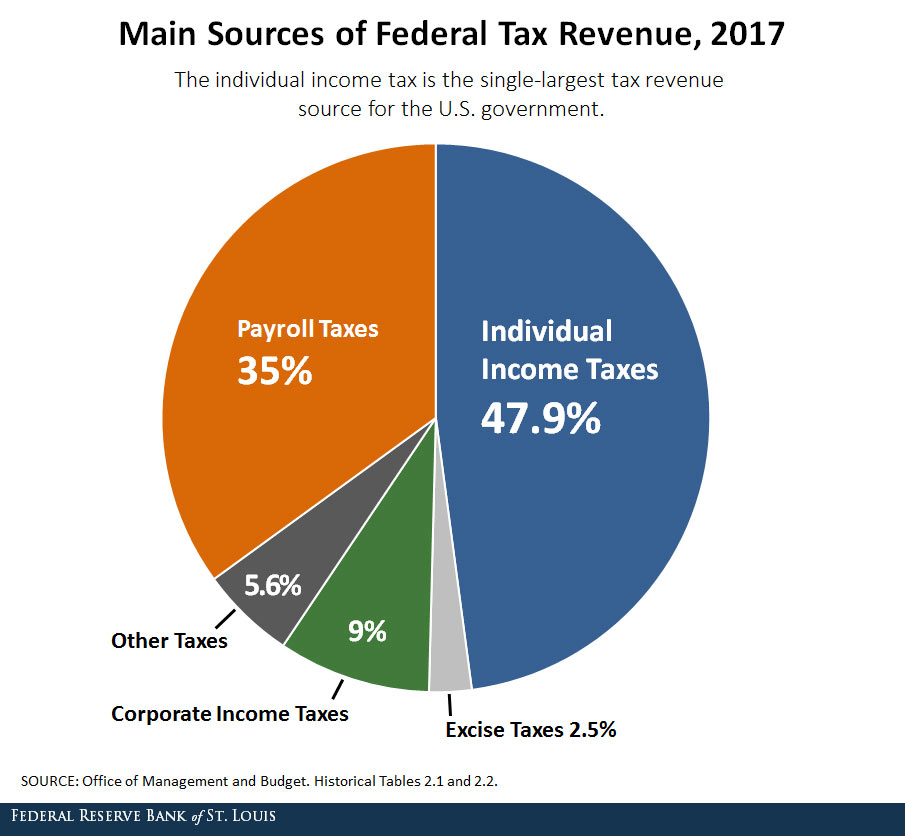The Purpose and History of Federal Income Taxes
This is the first of a two-part series. Part II covers progressive tax brackets and income levels.

Thinkstock/Brian A. Jackson
Few things generate more anxiety than filing taxes.
And with good reason: In 1913, the federal income tax form was four pages and included one page of instructions. Today’s federal tax code spans thousands of pages, and the Internal Revenue Service (IRS) website lists more than 2,000 forms and publications.
With tax season upon us, now’s the time to reflect on federal income taxes—how they originated and what purpose they serve.
Origins of the Income Tax: The Civil War
The United States’ first federal income tax was levied during the Civil War. It became clear to Congress that this would not be a quick war, and the government needed to generate more revenue. It was also during this period, in 1862, that a Commissioner of Internal Revenue was established.
Here’s a rundown of some key dates in income tax history:
- 1862: The U.S. government initiates a progressive federal income tax to offset Civil War expenses. It levies a 3 percent tax on incomes between $600 and $10,000 and 5 percent on incomes over $10,000.
- 1872: The tax is repealed.
- 1894: Federal income tax makes a short-lived comeback, but is ruled unconstitutional the very next year.
- 1913: The federal income tax resurfaces with the 16th Amendment to the Constitution, giving Congress legal authority to tax income.
- 1943: The Current Tax Payment Act is signed into law. It is designed to make income tax collection easier. The act requires employers to withhold federal income tax from an employee’s paycheck each pay period and send the payment directly to the IRS on behalf of the employee—a practice that remains today.
- 1953: The former federal Bureau of Internal Revenue is renamed the Internal Revenue Service we still know today.
- 1975: The Tax Reduction Act of 1975 creates the earned income tax credit. It reduces the tax burden on low- to moderate-income workers, particularly those with children.
How Much Tax Is Collected?
After an up-and-down history, the income tax now makes up a large chunk of federal tax revenue. In fact, according to the federal Office of Management and Budget, individual income taxes represented more than $1.58 trillion of the $3.3 trillion in total federal tax revenue for fiscal year 2017. That’s slightly less than half of all other sources combined, as shown in the figure below.

Definitions key:
Payroll taxes—The Federal Insurance Contributions Act (FICA) requires withholding Social Security and Medicare from an employee's wages. Employers must also pay a matching amount of the amount withheld.
Corporate income taxes—Taxes owed by businesses and firms based on their profits.
Excise taxes—Taxes paid when purchases are made on a specific good, such as gasoline; excise taxes are often included in the price of the product. There are also excise taxes on activities.
How Are Tax Dollars Spent?
Congress and the president determine how tax revenue is spent, and spending priorities vary based on who is in power. For a detailed accounting of federal outlays by agency (such as the departments of Agriculture, Transportation or State) or by function (such as international affairs or veterans benefits), the Office of Management and Budget provides downloadable spreadsheets going back decades.
Broadly, though, today’s tax revenue allows the government to operate and provide goods and services for citizens. These goods and services include roads, bridges, national parks, education, research and national defense.
In economic terms, a government service such as national security is considered a “public good.” Public goods are those that are:
Nonexcludable—The supplier of the good or service (in this case, the government) cannot keep people who don’t pay for it (in this case, those who are exempt from taxes) from consuming/using it.
Nonrival—A good or service is nonrival if one person’s consumption does not hinder anyone else’s consumption of it. In the national security example, even if the U.S. population grows, the level of protection for those already benefitting from it remains the same.
One Final Date: Filing Deadline Is April 17, 2018
The IRS expects about 155 million individual returns to be filed this tax season. The filing deadline is April 17. As the IRS explains, this is because April 15 falls on a Sunday, and Monday is Emancipation Day, which is a legal holiday in the District of Columbia. So, this year there’s a two-day extension for filing.
Additional Resources
- For more about income taxes, check out Page One Economics, “Income Tax: Facts and Filings.”
- For more history, see Historical Highlights of the IRS.
- To learn more about public goods, listen to episode 17 of our Economic Lowdown podcast series.
This blog explains everyday economics and the Fed, while also spotlighting St. Louis Fed people and programs. Views expressed are not necessarily those of the St. Louis Fed or Federal Reserve System.
Email Us


